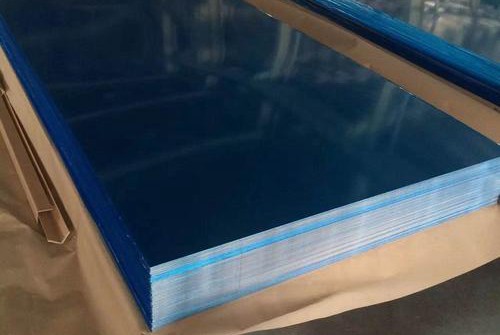The chemical composition of aluminium alloy 1050 is a key factor in understanding its remarkable properties and the wide range of applications it serves across various industries. Composed primarily of aluminium, this alloy also contains trace elements that influence its characteristics. In this article, we will delve into the chemical composition of aluminium alloy 1050, shedding light on its essential components and the impact they have on its performance.

Aluminium (Al):
At the heart of aluminium alloy 1050 lies its namesake element, aluminium. It accounts for a minimum of 99.5% of the alloy’s composition. This high aluminium content is a defining feature, contributing to the alloy’s outstanding electrical conductivity and corrosion resistance. It’s this purity that makes 1050 alloy a sought-after material in applications where these properties are crucial.
Silicon (Si):
Silicon is a minor alloying element in 1050 aluminium alloy, typically present at levels no greater than 0.25%. While silicon doesn’t significantly impact the alloy’s conductivity, it does enhance its overall strength and hardness. This addition makes 1050 alloy suitable for applications where a balance between electrical conductivity and mechanical properties is necessary.
Iron (Fe):
Iron content in 1050 alloy is limited to a maximum of 0.4%. The presence of iron can contribute to the alloy’s strength and formability. However, in excess, it can also reduce electrical conductivity and may have a slight impact on corrosion resistance.
Copper (Cu) and Zinc (Zn):
Copper and zinc, both present in trace amounts (typically no more than 0.05%), play a minimal role in 1050 alloy’s composition. Copper can enhance the alloy’s resistance to atmospheric corrosion, while zinc can improve its mechanical properties. These elements, though minor, can influence the alloy’s suitability for specific applications.
The chemical composition of aluminium alloy 1050 primarily consists of a high purity of aluminium (Al), with minor additions of silicon (Si), iron (Fe), copper (Cu), and zinc (Zn). This composition results in an alloy renowned for its exceptional electrical conductivity, corrosion resistance, and mechanical properties. The careful balance of these elements allows 1050 aluminium alloy to excel in diverse applications, from electrical transmission lines to architectural components and cookware. Understanding its chemical makeup is essential for selecting the right material for specific industrial and commercial needs.
